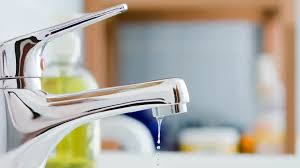Fix a Leaky Faucet Cartridge of a Kitchen Faucet
The exact broken or need a repair thing in this image is a leaky faucet cartridge of a kitchen faucet. This part appears to be damaged due to worn-out O-rings or a faulty cartridge, and needs immediate attention to restore full functionality.
Tools needed:
* Adjustable wrench
* Channel-type pliers (for removing old cartridge)
* Needle-nose pliers
* Teflon tape
* Replacement faucet cartridge (if necessary)
Step-by-Step Detailed Guide to Fix it:
- Turn off the water supply: Locate the shut-off valves under the sink and turn them clockwise to shut off the water supply to the faucet.
- Disassemble the faucet: Remove any visible screws or clips that hold the faucet handle in place. Gently pry the handle off to access the stem and cartridge.
- Identify the source of the leak: Inspect the cartridge and O-rings for signs of wear or damage. If the leak is coming from the cartridge, you may need to replace it.
- Remove the old cartridge: Use channel-type pliers to grip the old cartridge and pull it straight out. If it's stuck, use needle-nose pliers to gently rock it back and forth while pulling.
- Inspect and clean the cartridge housing: Use a soft brush or cloth to remove any mineral deposits or debris from the cartridge housing.
- Replace the O-rings or cartridge: If the O-rings are damaged, replace them with new ones. If the cartridge is faulty, replace it with a new one.
- Reassemble the faucet: Insert the new cartridge or O-rings into the faucet, and reattach the handle and any other parts you removed.
- Turn on the water supply: Turn the shut-off valves counterclockwise to restore water supply to the faucet.
- Test the faucet: Turn on the faucet and check for leaks.
Tips and Warnings:
* Use the correct replacement parts: Make sure to purchase replacement parts that match your faucet's brand and model.
* Turn off the water supply: Always turn off the water supply before starting repairs to avoid flooding or water damage.
* Use Teflon tape: Apply Teflon tape to threaded connections to ensure a watertight seal.
* Be careful not to overtighten: Avoid overtightening any connections, as this can damage the faucet or surrounding surfaces.
* Consider calling a professional: If you're not comfortable with DIY repairs or if the leak persists after trying to fix it, consider hiring a professional plumber.





